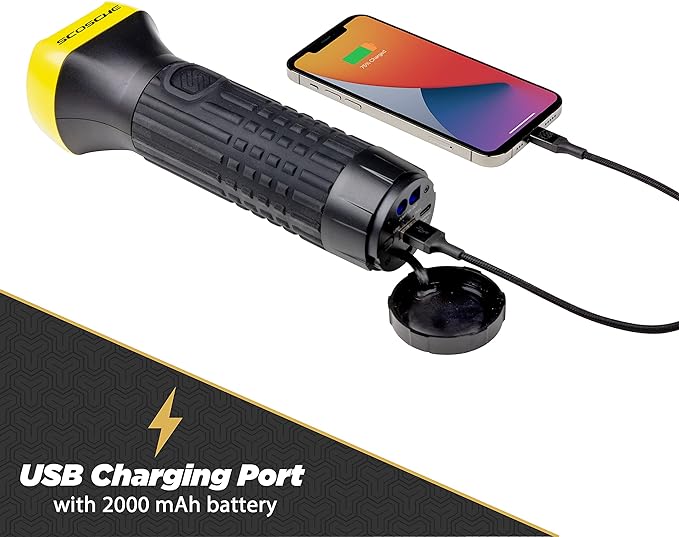
On our never-ending quest to improve this place by listening to feedback from the B&B, we are taking a new tack with these product posts, choosing instead to focus on items we use and have purchased with our own meager income. After all, if we’re giving you the truth about cars, we ought to give you the truth about car accessories.
One of the reasons this site works well is thanks to the marked similarities of, erm, quirks our writers have in common with readers. Like so many of you, most of our properties house at least one vehicle which won’t start on the first try, to say nothing of the random boxes of junkyard detritus accumulated through years of vehicular mayhem.
Busted hoopties often have dead batteries, making the modern booster pack something of a must-have around these parts. Sure, one could string out a set of jumper cables to a neighboring vehicle but that’s likely only going to result in a tangled web of wires that would kill all the Flying Wallendas. Besides, that other car probably has a dead battery, too.
Rapidly approaching his mid-forties, this author continues to use an older battery pack purchased about a decade ago – yet it is one that’s still available to buy new and provides plenty of teaching opportunities he’d like to pass on to the reader. This 20-pound honker is heavy as lead thanks to its acid-based battery composition but has never failed to spin the engine of everything from a John Deere lawn tractor to a Duramax-equipped Silverado. Rated at 1000 peak amps and 500 crank assist amps, this thing is still good for about three successful starting attempts before needing a recharge even after ten years of use.
If you take nothing else away from this post, it should be that old-school battery packs of this sort show up in two types: One that turns on via a dedicated on/off switch and one that rouses from its slumber by detecting a trickle of charge from the battery to which it is connected. The latter type was found to be absolutely useless, in my experience, since most of what I was boosting had batteries that were flatter than Kansas. Even if the pack was fully charged, it would not awaken to provide juice to the car in question.
TL;DR – if you’re investing in one of these styles of battery booster packs, make absolutely certain it has an on/off switch to activate the leads.
Of course, one needn’t lug around a heavy battery pack these days, not with the myriad of compact 12V jump starter units on the market. Many of these aren’t much bigger than a couple packs of smokes, leading this old guy to initially think they would not be capable of jump-starting a Little Tykes Cozy Coupe, let alone a Lincoln Town Car. I was utterly mistaken. Most of these things have enough gumption to light the fires on even large V8 engines at least once before needing a recharge, and their compact dimensions mean owners can easily stuff one in the glove box or spare tire well.
That latter point is of no small importance to parents whose youngsters have a whip in which they might find themselves (or a friend) stranded. Hell, I sure could have used one of these things in my own formative years instead of loitering in a flat parking lot and relying on the kindness of strangers to help get my beaten Ford Escort back on the road. I say flat because I quickly learned to park on a hill and pop its clutch to start the thing.

This booster from a company called Noco makes it into our post since I’ve used precisely the same unit in the not-too-distant past. The fact it is atop Amazon’s list of recommended products is probably why the person bought it in the first place. Nevertheless, it was dead simple to connect, belts out 1000A, and started an old V6-equipped Grand Am on the first go.
HOWEVER – and this is a big note – users must push the ‘polarity override’ button (the one with an exclamation point symbol) before connecting it to a battery if they suspect the battery is truly and completely dead. Remember the whole on/off switch debacle I mentioned earlier? Unless that override button is pushed, this Noco will not wake itself to boost a completely dead battery. The (!) button works as a true on/off switch, even if that is not its intended or advertised function. With that critical bit of information, which is mentioned in accompanying literature but not totally obvious, this is a great unit in most scenarios.
This booster pack from a brand called Scosche has also been used around our place to start items like wayward vehicles and a tractor. Despite looking (and sized) for all the world like a flashlight one would find in their household junk drawer, it has never failed to spin the starter on whatever vehicle to which it is attached. However, it is not clear if the thing would work with a totally dead battery like the other two units described above. Still, I am shocked by its capability in such a small package.
As planned, this series of posts will continue to focus on items we actually use and have bought with our own money. We hope you found this one helpful.
[Images: Manufacturer]
Become a TTAC insider. Get the latest news, features, TTAC takes, and everything else that gets to the truth about cars first by subscribing to our newsletter.
from TheTruthAboutCars https://www.thetruthaboutcars.com/cars/product-reviews/stuff-we-use-whats-the-best-battery-booster-pack-44502892?utm_medium=auto&utm_source=rss&utm_campaign=all_full
No comments:
Post a Comment